Winter wildlife in the South Downs
November 16, 2021
Winter is undoubtedly a magical time full of festive cheer and celebrations.
For many of us, winter is all about sitting in front of a warm fire, lighting candles and getting nice and cosy.
But what about wildlife? Sure, some of our wonderful creatures also like to get cosy and retreat into hibernation. Others go in search of a bit of winter sun before returning in the late spring.
Here’s our list of what wildlife you can spot this winter in the South Downs and where you can see it.
Fallow deer – Petworth Park
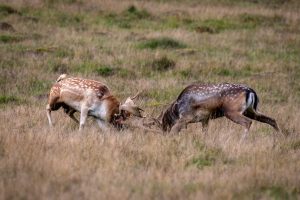
© Jamie Fielding
Petworth Park comprises some 700 acres with 700 fallow deer.
The Park itself is one of the best examples of a Lancelot ‘Capability’ Brown designed landscape.
Originally a hunting estate once used by Henry VIII, Petworth Park was extensively redesigned between 1753 and 1765 for Charles Wyndham, the 2nd Earl of Egremont.
Notable features include serpentine lakes, rolling lawn hills and belts of trees, including Scots pine, Norwegian spruce and some 200 cedar trees from Lebanon, all of which provide shelter for the herd of deer.
A non-indigenous species, fallow deer are thought to have been introduced by the Normans following their conquest in 1066 and are now a naturalised species, protected under the 1991 Deer Act.
If visiting Petworth Park, please keep dogs on the lead, especially when near the deer.
Fact: Did you know male fallow deer are known as ‘bucks’ and not ‘stags’?
Starlings – Sussex Heritage Coast
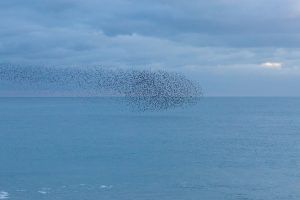
A starling murmuration is perhaps one of winter’s finest spectacles.
The Sussex Heritage Coast, stretching from Eastbourne to just past Cuckmere Haven is one of the best places to spot their dazzling, swirling displays.
Studies suggest starlings form flocks, or ‘murmurations’, as a means to deter predators, confusing them with their large swooshing, swirling patterns.
Unfortunately starling numbers have fallen 80% over the last 50 years, causing the species to be red listed, perhaps as a consequence of changes in farming practices since the Second World War.
In July 2021, the South Downs National Park launched it’s #ReNature campaign to increase the amount of land managed for nature from 25% to 33% by 2030, providing more habitat for wildlife to recover.
Fact: Starling numbers in the UK increase towards the end of October as the resident population is boosted by arrivals heading south from Scandinavia.
Woodlark – West Sussex Heathlands
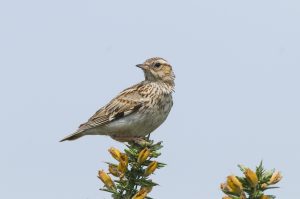
A small, secretive bird, woodlarks cling onto the southern heathland in the winter months, with some breeding pairs migrating across the channel to seek out warmer climates in Europe.
Whilst their cousin, the skylark, is often called the ‘songster of the Downs’, it might be fair to call the woodlark the ‘songster of the heaths’, as their noticeable song punctuates the open heathland as they rise and dip in flight.
A groundnesting bird, please keep dogs on the lead and stick to the path when walking on heaths to avoid disturbing their nests.
Since 2016, the Heathlands Reunited has been working to recreate, reconnect and restore the existing 1% of heathland left in the National Park.
Use our helpful map to find your local heath.
Fact: There are some 3,100 breeding pairs in the UK.
Mistletoe – Parham Park, Lavington Park and Cowdray Park
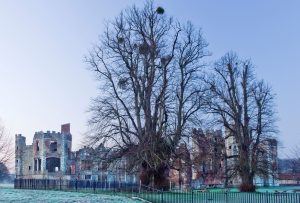
What is Christmas without a bit of hanging mistletoe?
Mistletoe, Viscus album, a woody, parasitic shrub native to Britain. Although parasitic in nature but it also gives, as well as takes.
Mistletoe marble moths are reliant on the plant, where the larvae overwinter within the mistletoe of the host tree before emerging in the spring.
It is found most often in orchards, parklands, gardens and churchyards and is therefore commonly associated with areas of human habitation on cultivated or deliberately planted trees.
Fact: Mistletoe can occur on up to 200 species of trees although rarely on conifers. Apple is the most common host, but it also occurs on lime, hawthorn, crack willow, poplar, robinia, field maple, sycamore, elm, horse chestnut, ash, whitebeam and rowan.
Robin – widespread
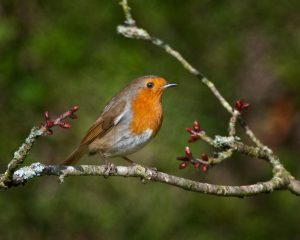
The robin is one of the country’s favourite birds but, despite their innocent appearance, they’re actually incredibly ferocious when it comes to defending their territory.
As with other bird species, their numbers swell in the winter as migrants from Scandinavia and Russia join the UK’s resident population to take advantage of the milder weather and greater abundance of food.
It’s thought that one of the reasons robins are heavily associated with Christmas is due to the nickname of Victorian postmen.
Posties of the day were easily identified by their red-breasted jackets and earned the nickname ‘Robins.’
Over time, card illustrators started to add depictions of robins to wintry scenes to symbolise the delivery of letters and Christmas cards during the season.
Fact: Due to the need to hold their winter territories, robins are one of the few birds in the UK that sing all year round.
